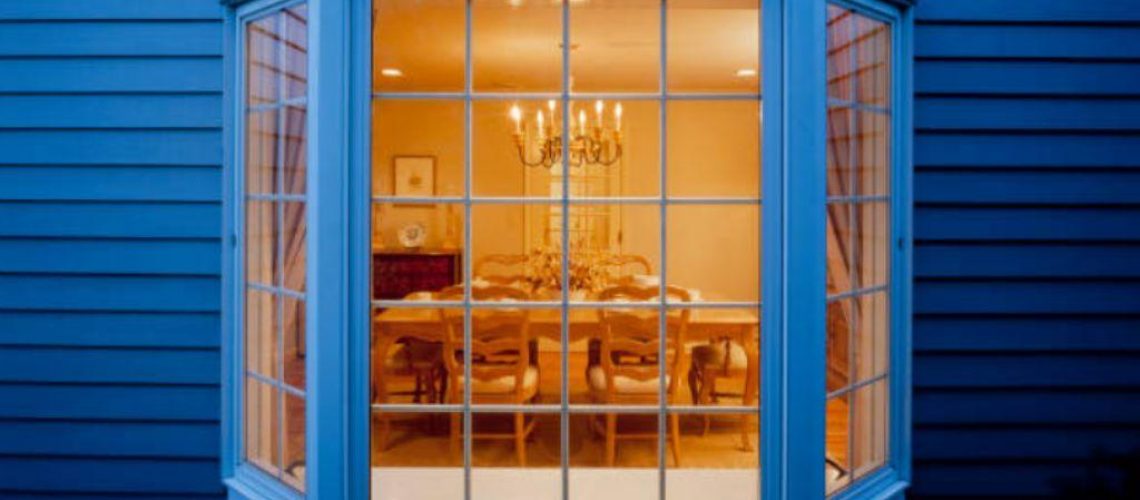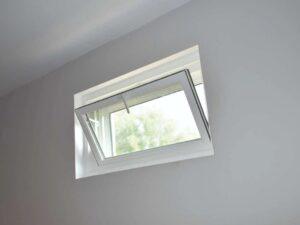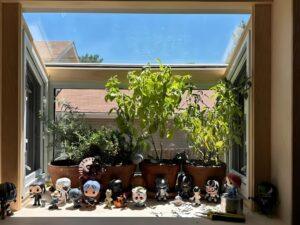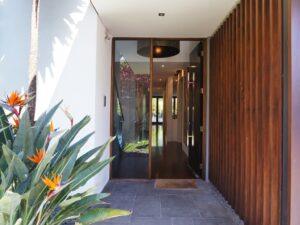Bay windows bring in extra sunlight, give you a cozy spot to sit in, and add a nice touch to your home’s design. But if yours feel drafty, look outdated, or just aren’t working like they used to, it might be time to replace them.
Here’s a quick breakdown of what to know before buying replacement bay windows—so you can make a smart choice that fits your home and budget.
What Is A Replacement Bay Window?
A replacement bay window is a pre-assembled unit that fits into your existing opening, replacing the old window without changing your wall structure. Most bay windows include:
- A large fixed center window
- Two smaller operable or fixed windows angled on each side
- A frame that extends outward, creating a small ledge or seating nook
The side windows can be casement, double-hung, or fixed. Bay windows are often found in living rooms, dining areas, or master bedrooms.
They’re different from new-construction windows, which are installed when the wall is built or rebuilt. Replacement windows are designed to preserve your current wall, trim, and framing—saving time and cost.
When Should You Replace A Bay Window?
Some homeowners wait until a window fails completely before considering replacement. But delaying repairs can lead to more expensive damage. Watch for these signs:
- Drafts or cold air – Even with closed windows, you feel temperature changes
- Foggy or cloudy glass – This usually means the seal between panes is broken
- Warped or rotting frames – Wood frames that are soft or discolored can signal water damage
- Difficulty opening or locking the window – Warping or poor balance can cause this
- Visible gaps or water leaks – These can affect your walls and flooring if left alone
Even if your window still works, age matters. Most bay windows last 15–30 years depending on materials and exposure. If yours is near the end of that range, a replacement may be the smarter long-term choice.
Benefits of Replacing Your Bay Window
Upgrading your bay window does more than fix existing issues. It improves energy efficiency, comfort, and aesthetics. Here’s what you gain:
- Energy savings – Modern windows reduce drafts and lower heating/cooling bills
- More usable space – Deeper window seats or storage beneath the sill can be added
- Improved curb appeal – Fresh materials and cleaner lines can update your home’s appearance
- Noise reduction – Thicker glass and tighter seals help block outdoor sounds
- UV protection – New windows can block harmful sunlight that fades flooring and furniture
These benefits aren’t just cosmetic—they can help improve resale value and reduce maintenance.
What To Look For
Choosing a replacement window isn’t just about size and shape. You’ll want to evaluate materials, performance features, and layout options.
Frame Material
The frame is what holds the glass together. Here’s how common choices compare:
- Vinyl – Affordable, good insulator, and virtually maintenance-free
- Wood – Classic look but needs painting and sealing over time
- Fiberglass – Stronger than vinyl, doesn’t warp, and resists weather damage
- Composite – Made from multiple materials for strength and insulation
Your choice will affect cost, durability, and appearance. Vinyl is the most budget-friendly, while fiberglass and composite offer better performance over time.
Glass Options
The glass you choose affects energy performance and comfort. Ask your contractor about:
- Double-pane vs. triple-pane glass – Triple-pane costs more but adds insulation and soundproofing
- Low-E coatings – Reflect heat while allowing visible light in
- Gas-filled panes – Argon or krypton gas between panes improves thermal performance
If your window gets a lot of sun, these upgrades can make a big difference in how your home feels year-round.
Window Configuration
You don’t have to match your old window exactly. Ask yourself:
- Do you want side windows that open for airflow?
- Would larger side windows enhance your view?
- Do you need extra seating or shelving below the bay?
Customizing your window can improve both function and style—without changing the size of the opening.
How to Measure Bay Windows for Replacement
Accurate measurements help avoid costly mistakes. Here’s a quick guide:
- Width: Measure inside the frame from side to side at the top, middle, and bottom. Use the smallest number.
- Height: Measure from the top of the frame to the sill on the left, center, and right. Use the shortest measurement.
- Depth: Measure how far the window projects from the wall (inside trim to outside trim).
- Angle: Most bay windows have 30°, 45°, or 90° angles between sections.
Use a steel tape measure and avoid rounding. For best results, have a pro confirm before ordering.
How Much Do They Cost?
Pricing depends on the size, materials, brand, and installation complexity. On average:
- Vinyl bay windows range from $2,000 to $3,500
- Mid-range options with upgraded glass and frames cost $4,000 to $6,000
- High-end custom windows (wood or composite) can exceed $6,500
Labor usually adds $500–$1,000, depending on how much structural work is required. If the wall, sill, or exterior cladding needs adjustment, your total cost will increase.
To stay within budget, get multiple quotes and ask for a breakdown of materials, labor, and disposal fees.
What’s Involved In The Installation Process?
Many homeowners don’t realize how detailed bay window installation can be. Here’s what the process includes:
- Inspection – A contractor checks the current window, measurements, and framing
- Custom ordering – The replacement window is built to fit your opening
- Old window removal – The existing bay is taken out carefully, preserving the opening
- Prep and repair – Any damage to framing, insulation, or flashing is repaired
- New window install – The unit is secured, leveled, and sealed
- Interior and exterior finish – Trim is reinstalled or replaced, and joints are caulked
Most installs take one full day, but homes with water damage or custom siding may take longer.
Installers often bring their own tarps and protective gear, but it’s still a good idea to move furniture and valuables away from the work area.
Should You Replace or Repair?
Not every issue calls for a full replacement. Here’s a quick guide:
Repair if:
- The problem is cosmetic (scratches, dings)
- The sealant or caulking is failing
- A single pane is cracked, but the frame is intact
Replace if:
- The frame is damaged or rotting
- The glass is foggy or leaking
- The window no longer opens, closes, or locks properly
- Your energy bills are rising due to poor insulation
You should also consider replacement if you’re planning to stay in your home long-term. A new bay window may pay for itself in comfort, resale value, and lower utility costs.
Questions to Ask Before You Buy
Before committing to a replacement, ask your contractor these important questions:
- Are your products ENERGY STAR certified?
- Who will install the window—your team or a subcontractor?
- Is your labor warranty separate from the manufacturer’s?
- What’s the lead time from order to install?
- Do you take care of permits, if required?
You deserve clear answers. If a contractor hesitates or dodges, it may be time to look elsewhere.
Why Homeowners Choose Ameritech Windows
Ameritech Windows helps homeowners get the most from their replacement bay windows with trusted service, clear pricing, and professional installation.
We make it easy to upgrade without the pressure. Want expert help choosing the right replacement bay window? Reach out today; let’s talk!










